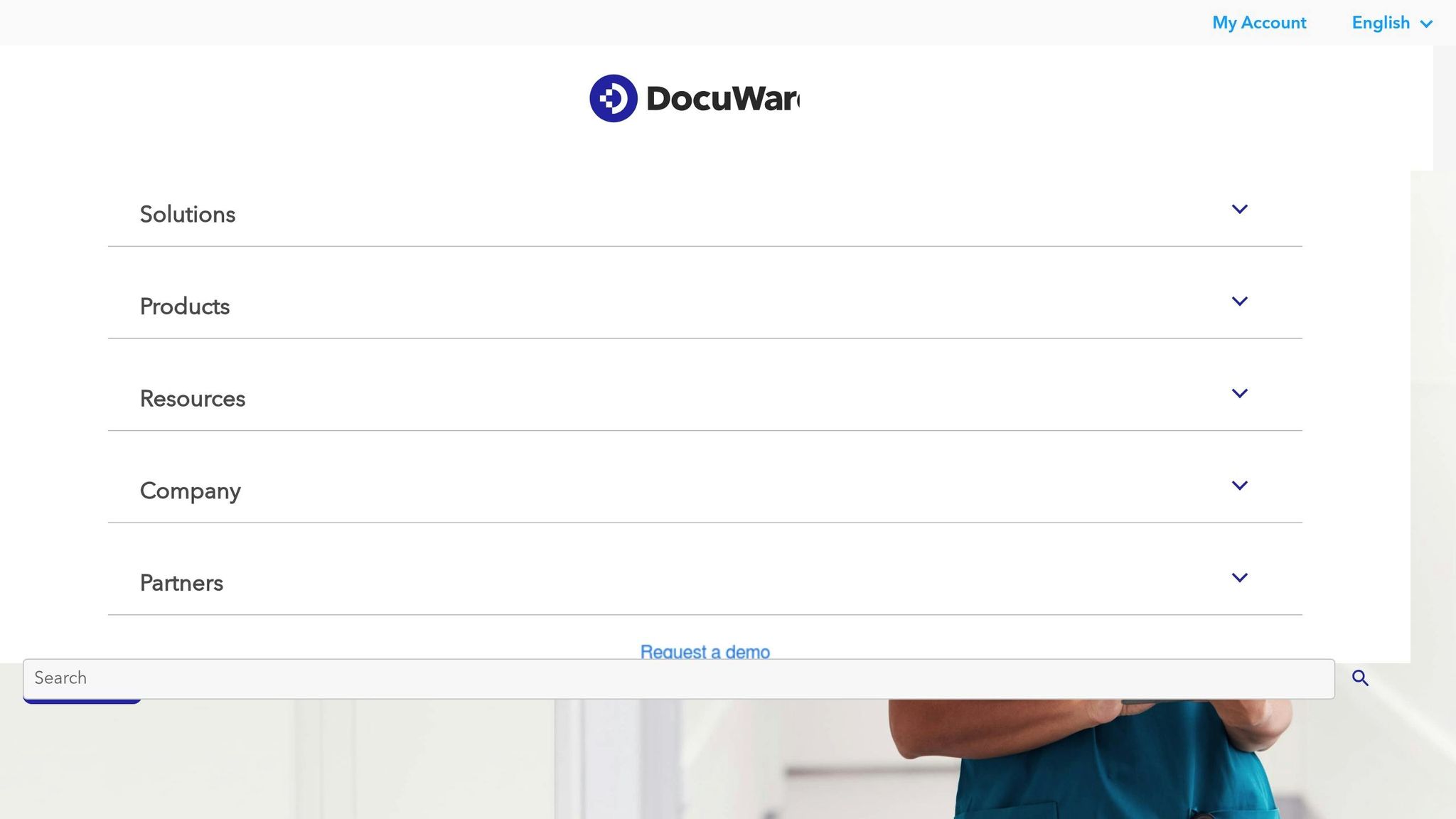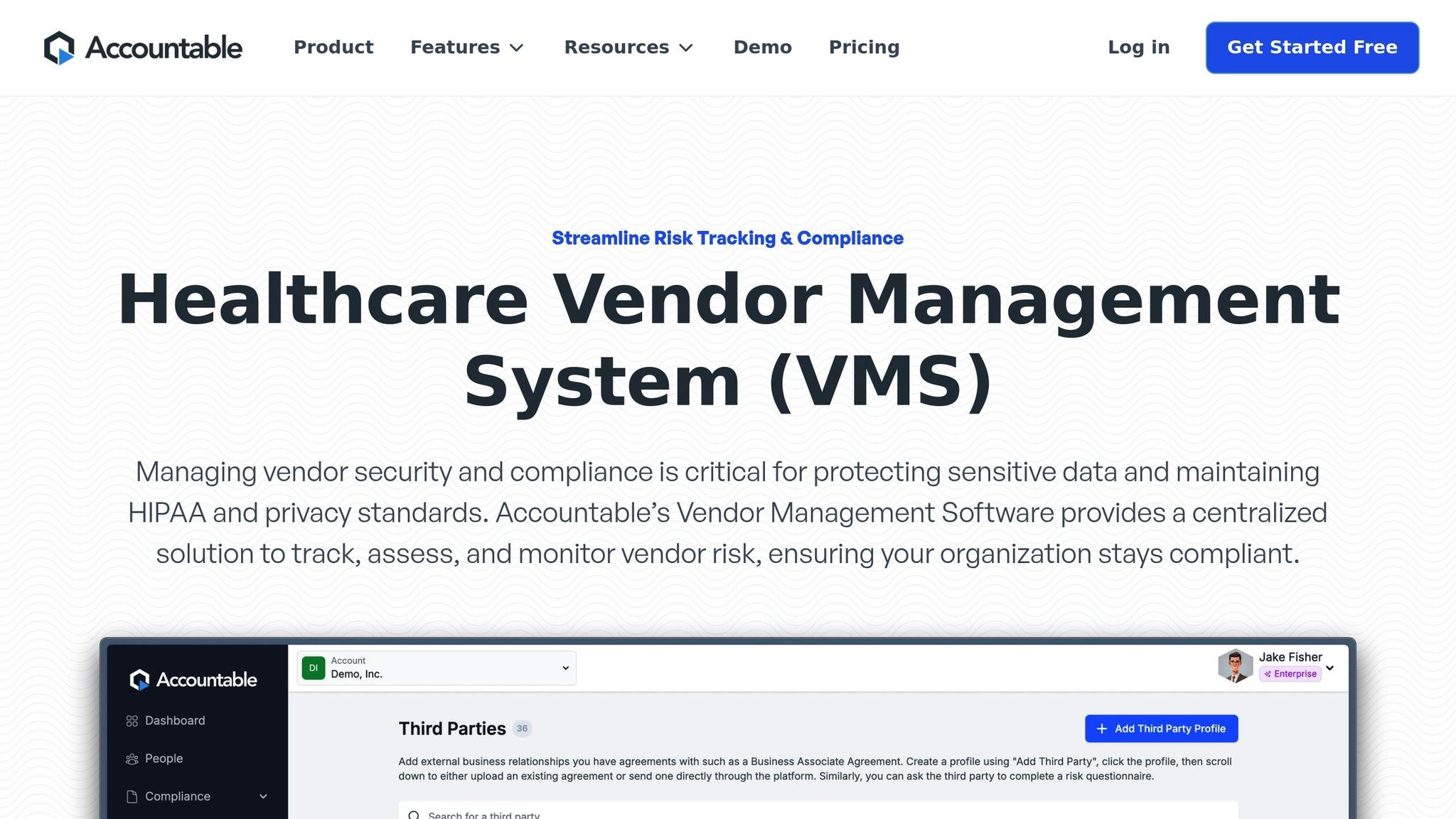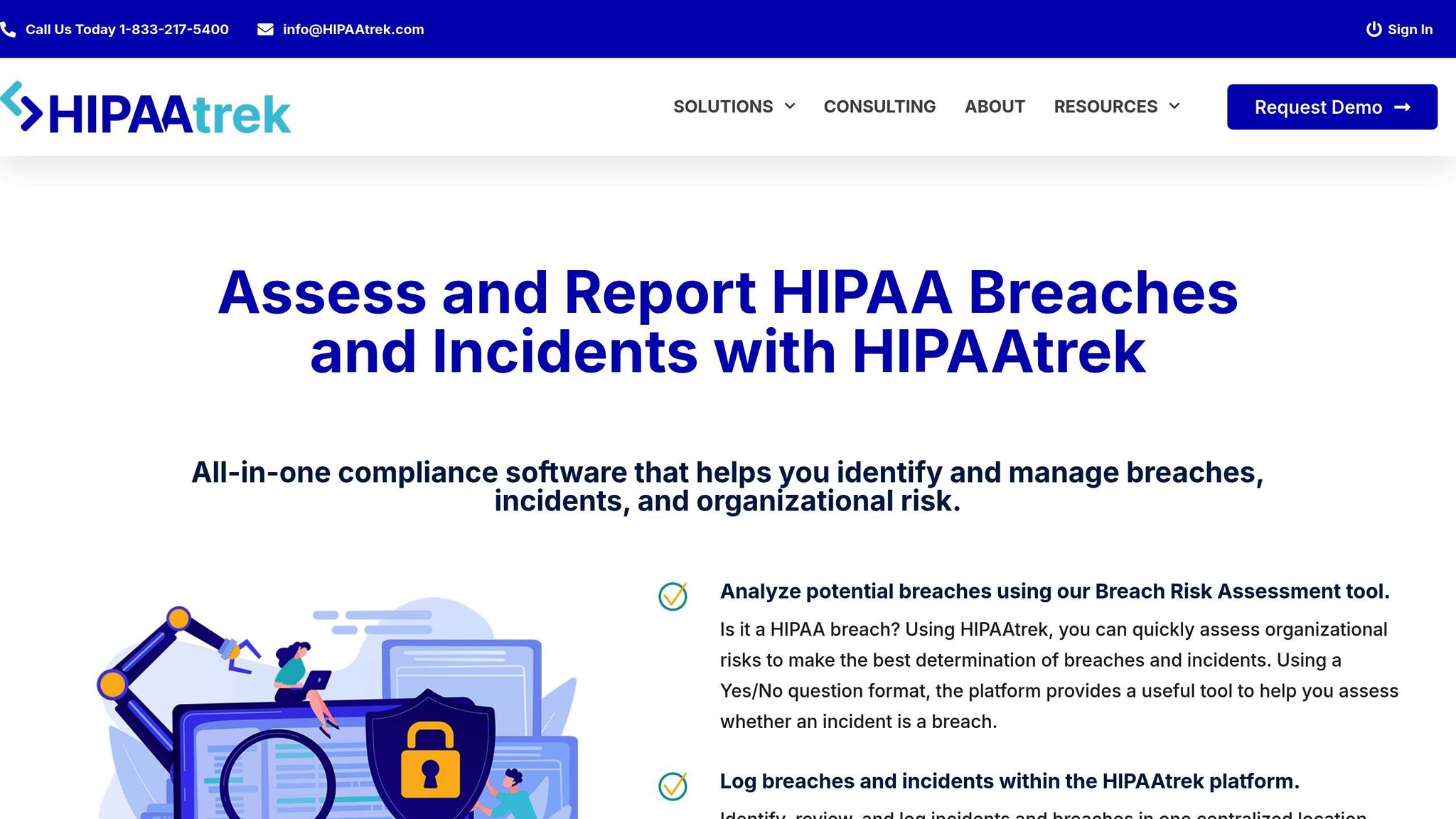Blog Overview
Top 7 HIPAA Compliance Tips for Oral Surgery Practices
Written by: nitin.vtaurusProtecting patient data is not just a legal requirement under HIPAA – it’s essential for maintaining trust in your oral surgery practice. Here’s a quick summary of the seven key steps to ensure compliance and safeguard sensitive information:
- Clear Privacy Policies: Use simple, easy-to-understand language to explain how patient data is handled and shared.
- Regular Risk Assessments: Identify vulnerabilities in your systems, such as outdated software or improper access, and address them proactively.
- Staff Training: Continuously train your team on privacy rules, secure data handling, and breach prevention.
- Secure Devices and Records: Lock paper records, encrypt digital files, and use strong passwords with auto-lock features.
- Vendor Agreements: Ensure all vendors handling patient data sign a Business Associate Agreement (BAA) and comply with HIPAA rules.
- Patient Records Access: Make it easy and secure for patients to access their records with identity checks, encryption, and multi-factor authentication.
- Data Breach Response Plan: Have a clear, tested plan in place to detect, contain, and report breaches quickly.
Strengthening Cybersecurity in Dental Practices: HIPAA …
1. Create Clear Privacy Policies
Your privacy policy shouldn’t feel like a legal maze. Use straightforward language – replace technical terms like "PHI disclosure protocols" with simple phrases like "how we share your health information." Aim for a 7th- or 8th-grade reading level by running it through a readability tool. Clear communication builds trust and ensures your audience actually understands what they’re agreeing to.
Now, let’s dig into spotting hidden risks before they cause trouble.
2. Regular Risk Assessment
Think of regular risk assessments as routine checkups for your data security. They help you catch potential issues before they turn into bigger problems.
A thorough assessment should cover everything connected to patient information. This includes checking who has access to records, evaluating the security of office computers and tablets, and reviewing physical safeguards like locked file cabinets and restricted areas. Pay extra attention to how staff handles patient data during hectic times – shortcuts often slip in when things get busy.
How often should you do this? Run quick vulnerability scans every three months and conduct a detailed review once a year. One common issue? Outdated software on office computers. It’s like leaving your front door open – an easy target for hackers. The solution? Enable automatic updates and maintain a monthly checklist to stay on top of things.
3. Keeping Staff Training Active and Effective
Let’s talk about keeping your team sharp with focused training. By using insights from your risk assessments, you can design sessions that keep HIPAA guidelines front and center. Cover key topics like privacy rules, secure data management, and how to prevent breaches. When your staff understands what’s acceptable and what’s not, you’re doing more than meeting compliance requirements – you’re strengthening patient confidence in your practice.
4. Secure Devices and Records
Once your team is trained, it’s time to safeguard the tools they rely on. Protect both digital devices and physical records by taking these steps:
- Lock up paper records: Store charts and documents in secure cabinets or rooms. Only allow access through unique keys or entry codes to ensure control.
- Fortify electronic devices: Use strong passwords, enable full-disk encryption, set up auto-lock features, and ensure remote-wipe capabilities are in place for computers, tablets, and phones.
- Stay updated: Install software updates as soon as they’re available and run regular antivirus scans to minimize security risks.
These precautions help protect sensitive information and keep your operations running smoothly.
sbb-itb-5642dcb
5. Vendor Agreements and Compliance
Securing your devices is just the start – now it’s time to focus on the people you work with, particularly your vendors. If any of them handle protected health information (PHI), a Business Associate Agreement (BAA) is non-negotiable. This legal document ensures vendors follow strict rules to safeguard PHI. Without it, you’re liable for any breaches they cause.
Start with a Vendor Inventory
Make a list of every vendor that interacts with PHI. This might include:
- Electronic health record systems
- Medical billing services
- Cloud storage providers
- IT support companies
- Document shredding services
Nail Down Your BAA Terms
Your BAAs should spell out the details clearly, including:
- How PHI can be used
- Security measures vendors must implement
- Breach notification steps
- Protocols for returning or destroying data
- Vendor training requirements
Keep an Eye on Compliance
Once the BAAs are in place, stay on top of compliance. Here’s how:
- Track key details, like expiration dates and breach notices.
- Conduct regular security evaluations.
- Log any compliance issues and confirm vendor staff are properly trained.
Stay organized and communicate regularly with your vendors. Up next, we’ll dive into how to make accessing patient records easy and secure.
6. Patient Records Access
How do patients get their hands on their health data without compromising security? Striking the right balance between accessibility and protection is key. Just like those quarterly vulnerability scans, your process for granting access needs regular checkups.
Now, what happens when patients request their own records?
Standardize the Process
Make it simple and clear for patients to request their records with a streamlined workflow:
- Request forms: Offer both paper and digital options.
- Identity checks: Verify patient identities before releasing any data.
- Response timelines: Align with a 30-day window, similar to breach-notice requirements.
- Urgent requests: Provide clear instructions for handling time-sensitive cases.
Secure Digital Access
When it comes to online access, security is non-negotiable. Put these measures in place:
- Multi-factor authentication: Add an extra layer of security for patient portals.
- Encryption: Ensure all records are encrypted during transmission.
- Access logs: Track who views records and when.
- Session timeouts: Automatically log users out after inactivity.
These steps not only protect sensitive information but also build trust with patients.
Set Clear Access Limits
Not everyone on your team needs full access to patient records. Role-based permissions are your best friend here:
- Front Desk: Handle appointment scheduling and insurance verification.
- Clinical Staff: Access and update notes, imaging, and other relevant data.
- Surgeons: Full access to clinical data for editing and review.
- Billing Staff: Limited to billing-related information only.
By defining these boundaries, you reduce the risk of accidental or unauthorized access.
Stay Organized
Keep patient records neat and traceable. Use consistent file naming conventions, retain original documents, and log every action related to record requests.
Address Special Cases
For minors and sensitive data, establish separate protocols. Ensure that representatives’ rights and privacy concerns are handled appropriately.
The goal? Make access straightforward for patients while keeping their data safe from any missteps.
7. Data Breach Response Plan
No matter how strong your access controls are, some threats might slip through. That’s why HIPAA requires a solid breach response plan. Here’s how to get one in place.
Define Roles Clearly
Think of it like assembling a team for a high-stakes mission. Assign these key roles:
- Breach Coordinator (Privacy Officer): Oversees the entire response process.
- IT Security Lead: Handles technical containment and investigation.
- Legal Counsel: Ensures compliance with legal obligations.
- Communications Lead: Manages internal and external messaging.
Map Out Your Response Steps
Your plan should include these core phases:
1. Detection & Assessment
Set clear criteria for identifying a breach. Log when it’s discovered, what data is involved, its impact, and the root cause. Leverage tools like your practice management system’s audit logs to spot unusual activity more quickly.
2. Containment
Act fast to secure affected systems. This might mean locking accounts, rotating passwords, or isolating compromised networks. Document every step you take for accountability and review.
3. Notification
Notify patients, the Department of Health and Human Services (HHS), and local media if necessary. Having pre-written message templates can speed up this process and ensure clarity.
Train and Test Often
A plan is only as good as your team’s ability to execute it. Make sure to:
- Conduct quarterly tabletop exercises and live drills.
- Update team roles, contact lists, and procedures whenever staff changes occur.
- Review and refine the plan annually or after every real-world incident.
- Post quick-reference guides in accessible areas for immediate use.
Keep Detailed Records
Proper documentation is critical. Maintain archives of risk assessments, team assignments, incident reports, training sessions, and post-incident reviews. These records can protect your practice and improve future responses.
HIPAA Compliance Tools Comparison
"Now, let’s see how specific compliance tools can make these steps easier." These tools align closely with the seven compliance strategies – here’s what they offer:
Audit & Access Manager
- Tracks who views or modifies records, including timestamps and changes – helping with risk assessments (Tip 2)
- Manages access through role-based permissions and logs staff activities automatically
- Sends alerts to practice managers for unusual access behavior
Document Control Suite

- Protects patient records with advanced encryption, both during storage and transfer
- Automates record retention timelines and secure destruction processes
- Features a secure patient portal with multi-factor authentication for added safety
Vendor Compliance Center

- Simplifies managing Business Associate Agreements (BAAs) with automated expiration reminders
- Monitors vendor security certifications and compliance status
- Keeps detailed logs of vendor interactions involving protected health information (PHI)
Breach Response Module

- Offers step-by-step workflows for handling incidents
- Includes pre-written notification templates that meet HHS standards
- Automatically logs all actions related to breach response for accurate reporting
Each tool integrates smoothly with your current processes while ensuring HIPAA compliance. For instance, the Document Control Suite works with both physical and digital records – ideal for practices moving toward paperless operations.
Summary
By following these steps, you’ve set the groundwork for HIPAA compliance in your oral surgery practice. Stick to these seven key elements: clear policies, routine audits, consistent training, secure record storage, strong vendor agreements, patient access controls, and a well-tested breach response plan.
Using compliance tools can simplify much of this process, cutting down on manual tasks and minimizing errors. When your team knows their responsibilities and vendors collaborate to safeguard patient data, compliance becomes second nature.
Keep your breach response plan sharp, secure data properly, and ensure patient record access is simple and transparent. Incorporating these practices into your daily workflow helps protect both your patients and your practice.
Our Recent Blog Posts

Top 7 HIPAA Compliance Tips for Oral Surgery Practices
Protecting patient data is not just a legal requirement under HIPAA - it’s essential for maintaining trust in your oral...
Read More
Cloud vs. On-Prem Oral Surgery Software: Which Setup Is Best for Your Practice?
Protecting patient data is not just a legal requirement under HIPAA - it’s essential for maintaining trust in your oral...
Read More